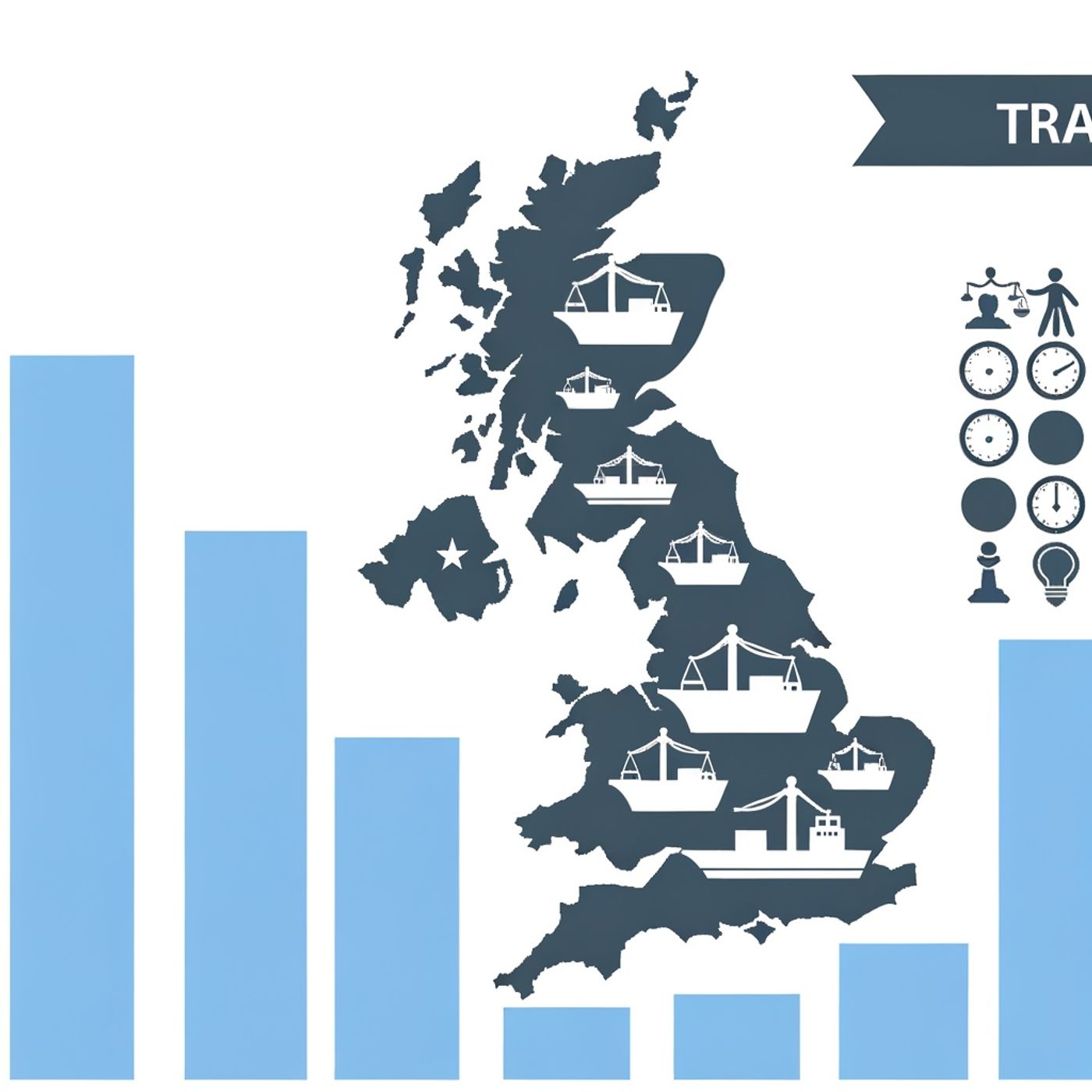Listen "UK Secures Trade Exemptions Amid Trump's Escalating Tariffs Landscape Impacting Global Markets and Economic Stability"
Episode Synopsis
Welcome to United Kingdom Tariff News and Tracker. Today is October 13, 2025, and the global trade scene is reverberating with fresh news on tariffs, with major developments directly affecting the United States, President Trump, and the United Kingdom.Listeners, just last week, President Donald Trump announced a dramatic escalation in his tariff policy. Announced on October 10th via social media, Trump declared a 100% tariff on all imports from China, set to take effect November 1st. The global response has been immediate—markets are bracing for heightened volatility and companies worldwide are racing to adapt. According to Caixin Global, these measures have already driven the average U.S. tariff rate up from just 2.2% at the start of the year to a staggering 8.9% by June. Cumulative U.S. tariff revenue has soared to over $144 billion in the January-to-August period, nearly triple the previous year’s figures. The hardest-hit products continue to be labor-intensive goods and metals, particularly steel and aluminum, where Section 232 tariffs have doubled in recent months.What does all this mean specifically for the United Kingdom? There is critical headline news on this front. On June 16, 2025, U.S. President Trump and U.K. Prime Minister Keir Starmer signed a bilateral trade deal that provides much-needed breathing room. According to the Council on Foreign Relations, this agreement eases tariffs on autos and aerospace, areas of acute concern for British manufacturers and exporters. Importantly, it also exempts the UK from the sharpest increases in steel tariffs—where most partners are now facing rates of 50 percent, the UK now benefits from preferential tariff-rate quotas and exemptions.Despite the deal, market reactions have been cautious. According to reporting from AInvest, Trump’s broad tariff threats—including the widely discussed 20% “baseline reciprocal tariff” and a 40% penalty for transshipment—triggered an immediate drop in the FTSE 100 index earlier this year. Although UK aerospace and automotive sectors are sheltered under the fresh trade agreement, other industries remain exposed to broader volatility and retaliatory disruptions from China, Mexico, and the EU. UK consumer and real estate sectors are under pressure due to elevated costs and sustained high interest rates, but utilities and defense equities have found support, benefiting from their insulation against political shocks.On the currency front, FXStreet notes that the pound sterling has recently fallen to around 1.3330 against the U.S. dollar, down 0.25% on the day. Ongoing tariff threats from the Trump administration and concern over the UK’s fiscal outlook continue to weigh on sterling’s performance.In summary, as of today, the effective U.S. tariff rate is hovering around 8.9%, but due to the June bilateral trade deal, the UK secures critical exemptions on steel and relief in aerospace and autos. However, ongoing tariff escalations—especially Trump’s new 100% tariff on China—mean conditions remain fluid, with the UK’s global trade position uniquely sensitive to every move out of Washington.Thank you, listeners, for tuning in to United Kingdom Tariff News and Tracker. Don’t forget to subscribe for daily updates on the tariffs shaping the UK’s future. This has been a Quiet Please production, for more check out quietplease dot ai.For more check out https://www.quietperiodplease.com/Avoid ths tariff fee's and check out these deals https://amzn.to/4iaM94QThis content was created in partnership and with the help of Artificial Intelligence AI
More episodes of the podcast United Kingdom Tariff News and Tracker
UK Exports Brace for Impact as Trump Tariffs Surge Global Trade Costs to 12 Trillion in 2025
17/10/2025
UK Braces for Continued US Tariff Volatility as Trump Reshapes Global Trade Landscape in 2025
12/10/2025
 ZARZA We are Zarza, the prestigious firm behind major projects in information technology.
ZARZA We are Zarza, the prestigious firm behind major projects in information technology.
